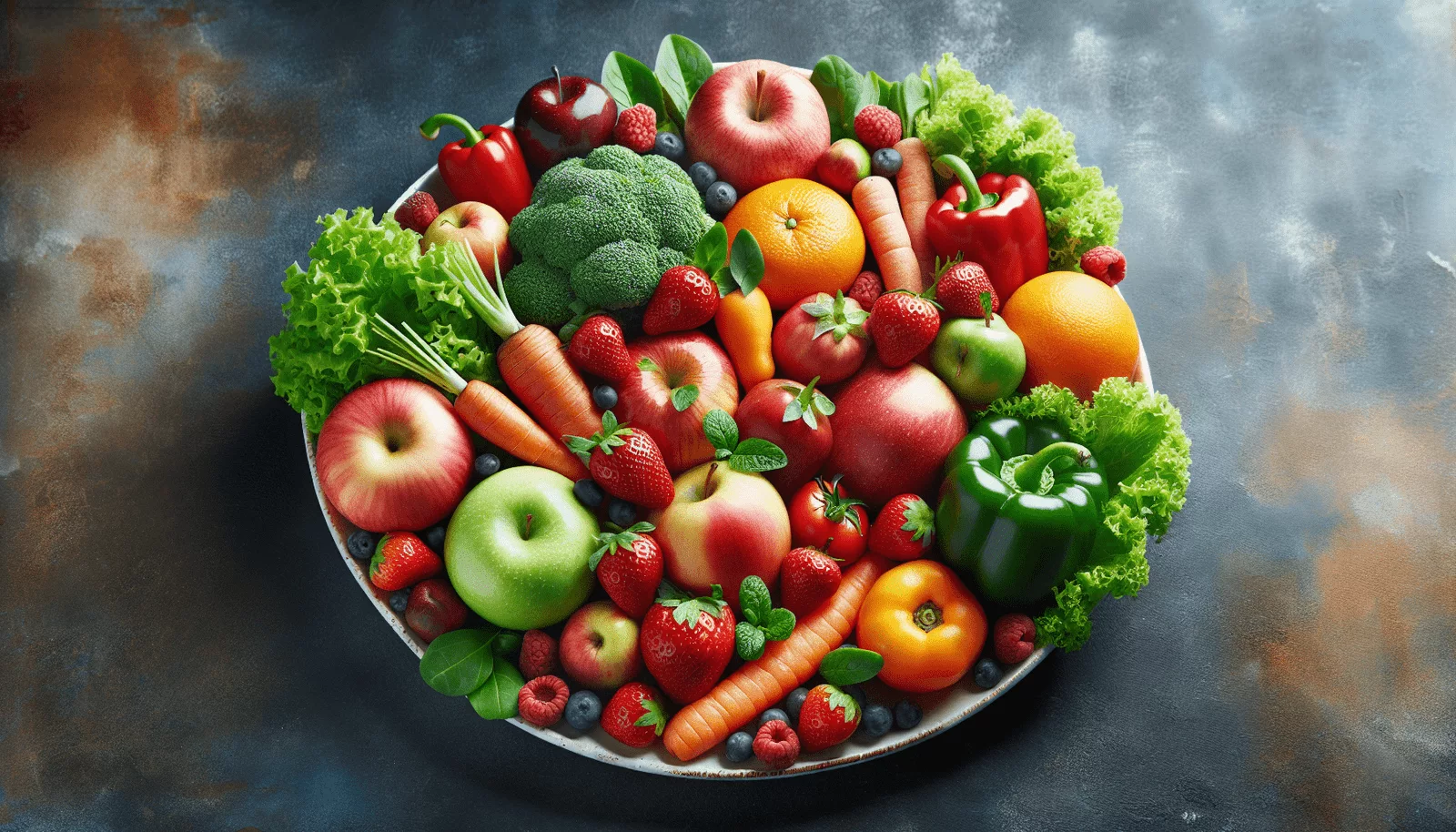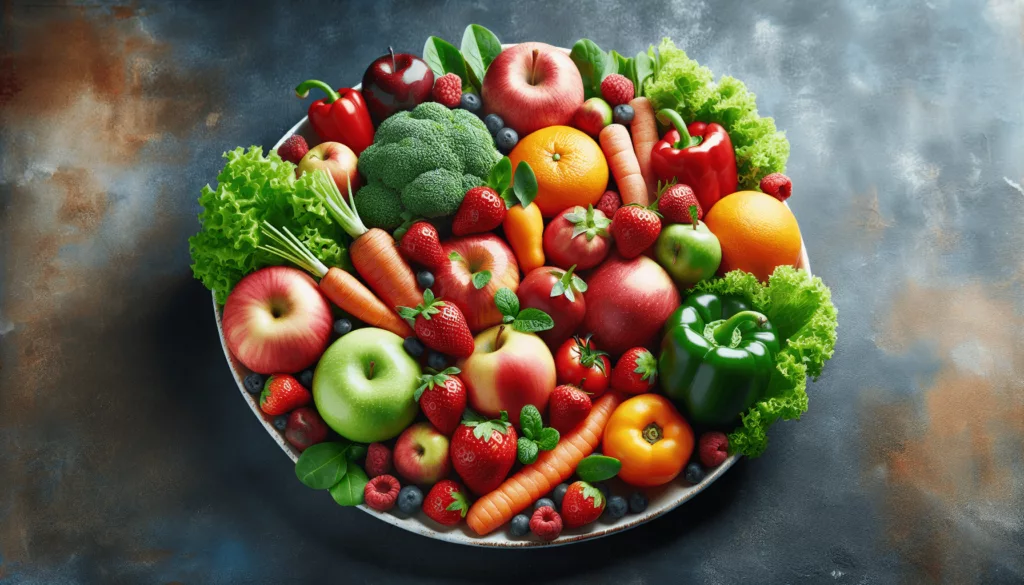
Are you tired of endless dieting and exercise routines that never seem to get you the results you want? Look no further than Earthy Cures for a new, sustainable approach to weight loss. Many people have fallen into the trap of believing that eating less is the key to shedding pounds, but this overlooks the crucial role of nutrient-rich, low-calorie foods. At Earthy Cures, we know that the secret to effortless weight loss lies in nourishing your body with the right foods. Say goodbye to restrictive diets and grueling workouts, and say hello to a healthier, happier you. Join us as we break free from diet traps and discover the power of nourishing our way to weight loss.
The Failure of Restrictive Diets
The allure of quick results
When it comes to weight loss, many people are attracted to the idea of quick results. The promise of shedding pounds in a short amount of time is tempting and can lead to a desire for restrictive diets. However, the reality is that most restrictive diets are not sustainable in the long run and often result in failure.
The yo-yo effect of restrictive diets
One of the main problems with restrictive diets is the yo-yo effect they often have on our bodies. These diets typically involve severely cutting calories or eliminating entire food groups, which can lead to initial weight loss. However, this weight loss is often temporary, and once the diet is over, people tend to regain the weight they lost. This cycle of weight loss and regain can be frustrating and disheartening.
The impact on metabolic rate
Restrictive diets can also have a negative impact on our metabolic rate. When we drastically reduce our calorie intake, our bodies go into survival mode and slow down our metabolism in order to conserve energy. This can make it even more difficult to lose weight and maintain a healthy weight in the long term. It is important to find a balance that allows for sustainable weight loss without negatively affecting our metabolic rate.
Understanding the Nutrient-Density Concept
What is nutrient density?
Nutrient density refers to the amount of nutrients, such as vitamins and minerals, in a given food compared to the number of calories it contains. Foods that are nutrient-dense provide a high amount of nutrients with relatively few calories. These foods are essential for nourishing our bodies and supporting overall health and well-being.
Differentiating between nutrient-dense and calorie-dense foods
It is important to differentiate between nutrient-dense and calorie-dense foods. Calorie-dense foods are often high in calories but may provide very few nutrients. On the other hand, nutrient-dense foods are typically lower in calories but packed with essential vitamins, minerals, and other beneficial compounds. By focusing on nutrient-dense foods, we can fuel our bodies with what they need without consuming excessive calories.
The benefits of nutrient-dense foods for weight loss
Incorporating nutrient-dense foods into our diet can be highly beneficial for weight loss. These foods are not only lower in calories, but they also provide the necessary nutrients to support our body’s functions and promote overall health. By prioritizing nutrient-dense foods, we can create a sustainable and balanced approach to weight loss that nourishes our bodies and helps us achieve our goals.

The Role of Low-Calorie Foods in Weight Loss
The myth of calorie restriction
The idea of calorie restriction as the key to weight loss is a common misconception. While reducing calorie intake is important, simply focusing on eating fewer calories without considering their quality can be misleading. Low-calorie foods should not be thought of as the only factor contributing to weight loss, but rather as part of a comprehensive approach that includes nutrient density and overall diet quality.
The importance of calorie quality
When it comes to weight loss, the quality of the calories we consume is just as important as the quantity. Low-calorie foods that are also nutrient-dense provide us with the necessary energy while supporting our overall health. By choosing foods that are both low in calories and rich in nutrients, we can fuel our bodies in a way that promotes weight loss and optimal well-being.
Choosing low-calorie foods for satiety and nutrition
Incorporating low-calorie foods into our diet can help us feel satisfied while still consuming fewer overall calories. These foods are often high in fiber, which can promote feelings of fullness and prevent overeating. By prioritizing low-calorie foods that are also nutrient-dense, we can nourish our bodies without sacrificing satisfaction or flavor.
Identifying High-Quality Nutrient-Dense Foods
Understanding macronutrients and micronutrients
Macronutrients, such as carbohydrates, proteins, and fats, are the building blocks of our diet. They provide us with energy and essential nutrients. Micronutrients, on the other hand, are vitamins and minerals that our bodies need in smaller amounts but are equally important for our overall health. By understanding the role of both macronutrients and micronutrients, we can identify high-quality nutrient-dense foods.
Foods high in vitamins and minerals
Incorporating foods that are rich in vitamins and minerals is essential for a nutrient-dense diet. Fruits and vegetables are excellent sources of a wide range of vitamins and minerals. Additionally, whole grains, lean proteins, and healthy fats can provide us with the nutrients we need to support our overall health and well-being.
Incorporating lean proteins and healthy fats
Proteins and fats are often overlooked when it comes to weight loss, but they play a crucial role in a nutrient-dense diet. Lean proteins, such as chicken, turkey, fish, and legumes, can provide us with essential amino acids while being relatively low in calories. Healthy fats, such as avocados, nuts, and olive oil, can help us feel satisfied and provide us with important nutrients. By incorporating lean proteins and healthy fats into our meals, we can create a well-rounded and nourishing diet.

Creating a Balanced and Nourishing Meal Plan
Developing a personalized meal plan
Creating a personalized meal plan is an essential step in achieving sustainable weight loss. This plan should take into account individual preferences, dietary restrictions, and goals. By tailoring the meal plan to our specific needs, we can ensure that we are getting the necessary nutrients while enjoying the foods we love.
Emphasizing whole, unprocessed foods
When creating a meal plan, it is important to emphasize whole, unprocessed foods. These foods are often more nutrient-dense and provide us with the necessary vitamins and minerals our bodies need. By choosing whole foods, such as fruits, vegetables, whole grains, and lean proteins, we can nourish our bodies and support our weight loss goals.
Balancing carbohydrates, proteins, and fats
A balanced meal plan includes a variety of macronutrients. Carbohydrates, proteins, and fats should be included in appropriate portions to provide us with the energy and nutrients we need. By finding the right balance of these macronutrients, we can support weight loss while ensuring our bodies are receiving the fuel they need to function optimally.
Including a variety of fruits and vegetables
Fruits and vegetables are essential components of a balanced and nourishing meal plan. They are rich in vitamins, minerals, and dietary fiber, which can support our overall health and weight loss goals. By including a variety of fruits and vegetables in our meals, we can add flavor, texture, and a wide range of nutrients to our diet.
Incorporating healthy cooking methods
In addition to choosing nutrient-dense foods, the way we prepare our meals can also impact their nutritional value. By incorporating healthy cooking methods, such as steaming, baking, grilling, or sautéing, we can retain more of the nutrients in our foods. Avoiding excessive oil or added sugars can further enhance the healthiness of our meals.
The Importance of Mindful Eating
Understanding the mind-body connection
Mindful eating involves being present and fully engaged in the act of eating. It is about cultivating a deep awareness of our body’s hunger and fullness cues, as well as our emotional relationship with food. By practicing mindful eating, we can develop a better understanding of our body’s needs and make conscious choices that support our weight loss journey.
Practicing mindful eating techniques
There are several techniques we can practice to become more mindful eaters. One technique is to eat slowly and savor each bite, paying attention to the flavors, textures, and aromas of the food. Another technique is to listen to our body’s hunger and fullness cues, eating when we are physically hungry and stopping when we are comfortably full. By practicing these techniques, we can develop a healthier and more mindful relationship with food.
Eating slowly and savoring each bite
Eating slowly and savoring each bite not only allows us to fully appreciate our meals, but it also gives our bodies time to register satisfaction. It takes about 20 minutes for our brain to receive the signal from our stomach that we are full. By eating slowly, we can avoid overeating and better control our portion sizes.
Listening to hunger and fullness cues
Our bodies have built-in mechanisms to let us know when we are hungry and when we are full. By listening to these hunger and fullness cues, we can better nourish our bodies and avoid mindless eating. It is important to eat when we are truly hungry and stop eating when we are comfortably full, rather than relying on external cues or emotional triggers.
Avoiding emotional eating
Emotional eating is a common pattern that can derail our weight loss efforts. When we turn to food as a way to cope with our emotions, we are not addressing the underlying issues. By developing alternative coping mechanisms, such as engaging in physical activity, practicing relaxation techniques, or seeking support from friends and family, we can break free from emotional eating patterns and create a healthier relationship with food.
Breaking Free from Emotional Eating Patterns
Recognizing emotional triggers
In order to break free from emotional eating patterns, it is important to first recognize our emotional triggers. These triggers can vary from person to person and may include stress, boredom, sadness, frustration, or even happiness. By becoming aware of the emotions that trigger our desire to eat, we can begin to develop healthier coping mechanisms.
Finding alternative coping mechanisms
Instead of turning to food as a way to cope with our emotions, it is important to find alternative coping mechanisms. Engaging in physical activity, such as going for a walk or practicing yoga, can help us manage stress and improve our mood. Other techniques, such as deep breathing exercises, journaling, or talking to a supportive friend or therapist, can also be effective in managing emotional triggers.
Enjoying food without guilt or shame
Breaking free from emotional eating patterns also involves changing our mindset around food. It is important to enjoy food without guilt or shame and to give ourselves permission to eat indulgent foods in moderation. By cultivating a positive and non-restrictive mindset, we can develop a healthier and more balanced relationship with food.
Incorporating Exercise for a Sustainable Lifestyle
The role of exercise in weight loss
While nutrition plays a crucial role in weight loss, exercise is also an important component of a sustainable lifestyle. Regular physical activity can help burn calories, increase metabolism, build lean muscle mass, and improve overall fitness. By incorporating exercise into our daily routine, we can enhance our weight loss efforts and improve our overall health and well-being.
Finding enjoyable physical activities
Incorporating exercise into our daily routine becomes easier when we find activities that we enjoy. Whether it’s dancing, hiking, swimming, or practicing yoga, finding enjoyable physical activities can make exercise feel less like a chore and more like a fun and rewarding experience. By discovering activities that bring us joy, we are more likely to stick with them in the long run.
Creating a balanced exercise routine
A balanced exercise routine should include a combination of cardiovascular exercises, strength training, and flexibility exercises. Cardiovascular exercises, such as brisk walking or cycling, help burn calories and improve cardiovascular health. Strength training exercises, such as lifting weights or doing bodyweight exercises, help build lean muscle mass and increase metabolism. Flexibility exercises, such as yoga or stretching, can improve flexibility and reduce the risk of injury. By incorporating all three types of exercise into our routine, we can achieve a well-rounded and effective workout regimen.
Building a Supportive Environment
Surrounding yourself with like-minded individuals
Building a supportive environment starts with surrounding ourselves with like-minded individuals. By seeking out people who share our goals and values, we can create a positive and encouraging support system. Engaging with others who are also on a journey to improve their health and well-being can provide us with inspiration, motivation, and accountability.
Seeking support from friends and family
In addition to seeking out like-minded individuals, it is important to seek support from our friends and family. By sharing our goals and aspirations with our loved ones, we can gain their support and encouragement. Having a support system that believes in us and cheers us on can make a significant difference in our weight loss journey.
Exploring online communities and resources
The internet offers a wealth of online communities and resources that can provide support and guidance on our weight loss journey. Joining online forums or social media groups focused on health and wellness can connect us with people who are going through similar experiences. Additionally, there are numerous websites, blogs, and apps that offer valuable information, tips, and resources to support our weight loss efforts.
Celebrating Progress and Maintaining Motivation
Setting realistic goals
Setting realistic and achievable goals is crucial for maintaining motivation and celebrating progress. By breaking our weight loss journey into smaller milestones, we can track our progress and feel a sense of accomplishment along the way. It is important to set goals that are challenging yet attainable, allowing us to continually push ourselves while also recognizing our achievements.
Tracking progress and achievements
Tracking our progress and achievements can be a powerful motivator. Whether it’s keeping a food journal, using a fitness tracker, or taking measurements and photos, finding a way to visually see our progress can boost our confidence and keep us motivated. By regularly reviewing our progress, we can stay focused on our goals and celebrate the positive changes we have made.
Rewarding yourself appropriately
Rewarding ourselves for our hard work and accomplishments is an important part of maintaining motivation. However, it is important to choose rewards that align with our weight loss goals and support our overall well-being. Instead of using food as a reward, consider treating yourself to non-food rewards, such as a spa day, a new workout outfit, or a weekend getaway. By choosing rewards that enhance our health and happiness, we can reinforce positive behaviors and stay motivated.
Staying motivated during plateaus
Plateaus are a common part of the weight loss journey and can be discouraging. However, it is important to remember that plateaus are often temporary and can be overcome with persistence and determination. During plateaus, it can be helpful to revisit our goals, adjust our meal plan or exercise routine, and seek support from our community. By staying proactive and maintaining a positive mindset, we can push through plateaus and continue making progress towards our weight loss goals.
In conclusion, the failure of restrictive diets and the importance of nutrient-dense, low-calorie foods cannot be overstated when it comes to achieving sustainable weight loss. By understanding the concept of nutrient density, the role of low-calorie foods, and the importance of a balanced and nourishing meal plan, we can create a lifestyle that supports our health and well-being. Incorporating mindful eating, breaking free from emotional eating patterns, incorporating exercise, building a supportive environment, and celebrating progress and maintaining motivation are essential components in our weight loss journey. With the right knowledge, mindset, and support, we can nourish our way to weight loss and achieve a healthier, happier life.
